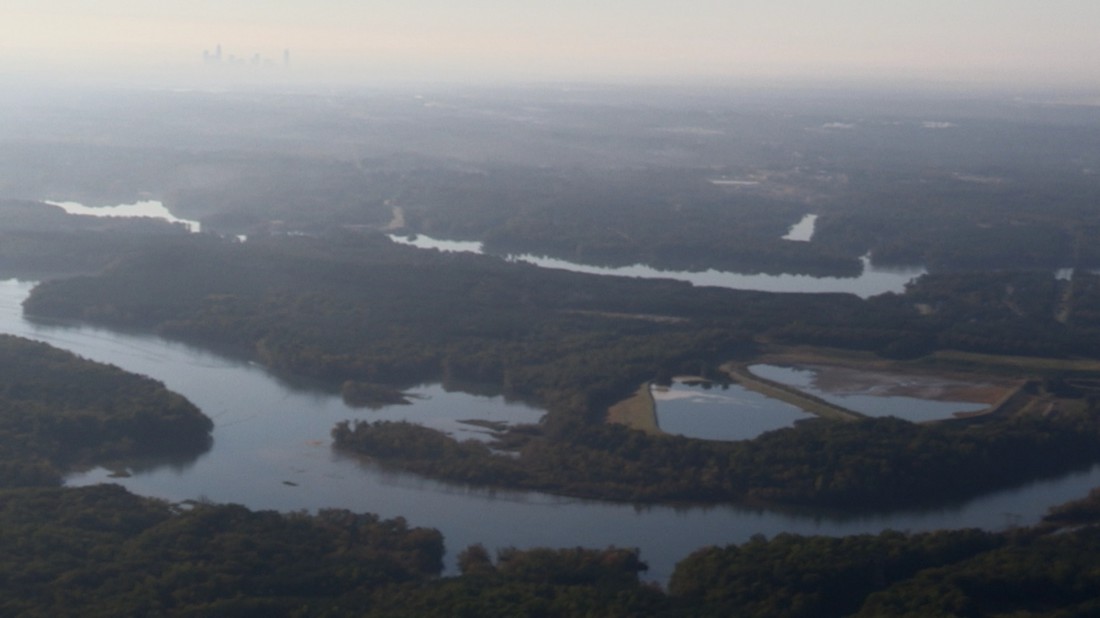Asheville Coal Ash Stories is a June 19 program of short films – An Ill Wind, At What Cost?, Coal Ash Chronicles and Downwind and Downstream – followed by a post-screening presentation with the objective of increasing public awareness of the problem, and potential threats, of coal ash ponds. The films are straightforward documentaries that aren’t in themselves likely to set the world on fire as filmmaking. However, the information they contain and the subject being addressed should not be overlooked.
Here are excerpts from the publicity handout:
On Thursday, June 19, local organizations will host a free film night as part of Coal Ash Stories, a statewide screening tour featuring four short documentary films focused on coal ash, related public health concerns, and policy. The screening is free and open to the public and will be held at 7 p.m. at the Unitarian Universalist Congregation of Asheville, 1 Edwin Place.
This February, a storm-water pipe below a massive Duke Energy coal ash impoundment failed, spilling 140,000 tons of toxic-laden coal ash and contaminated wastewater into North Carolina’s Dan River. This coal ash sludge now coats the Dan for 70 miles downstream, and the full public health and economic impacts are still unknown.
“In addition to leaking toxics to groundwater and the French Broad River, the Asheville Power Station’s coal ash impoundments are rated ‘high hazard’ by EPA,” says Katie Hicks of Clean Water for North Carolina. “That means that a Kingston-like failure of the 90-foot-tall earthen dams perched above I-26 and the French Broad River would cause massive infrastructure damage and [possible] loss of human life. These dumpsites pose serious threats to our community and need to be moved to safer, modern storage immediately.”
The films and post-screening program will provide an opportunity for the public to learn about the health and environmental impacts of coal ash in communities across the country, talk with community members, and get involved in efforts to hold utilities accountable for their waste. “Coal ash is the second largest industrial waste stream in America, though it is less regulated than your household garbage,” states Amy Adams of Appalachian Voices, one of over 20 organizations partnering to present the tour.
The four films featured in Coal Ash Stories – An Ill Wind, At What Cost?, Coal Ash Chronicles, and Downwind and Downstream – paint a grim picture of what life looks like when coal ash pollutes a community. People are unable to drink their own water, take a bath, fish, or farm without worrying about long-term health effects. Similar fears are now facing communities located near other coal-fired power plants in North Carolina.
Ulla Reeves of Southern Alliance for Clean Energy says, “The Dan River is a tragic reminder of the dangers associated with storing coal ash in outdated, leaking impoundments next to our rivers. However, it’s not an isolated incident and communities across our region and country are living with coal ash impacts and threats on a daily basis.”




Before you comment
The comments section is here to provide a platform for civil dialogue on the issues we face together as a local community. Xpress is committed to offering this platform for all voices, but when the tone of the discussion gets nasty or strays off topic, we believe many people choose not to participate. Xpress editors are determined to moderate comments to ensure a constructive interchange is maintained. All comments judged not to be in keeping with the spirit of civil discourse will be removed and repeat violators will be banned. See here for our terms of service. Thank you for being part of this effort to promote respectful discussion.